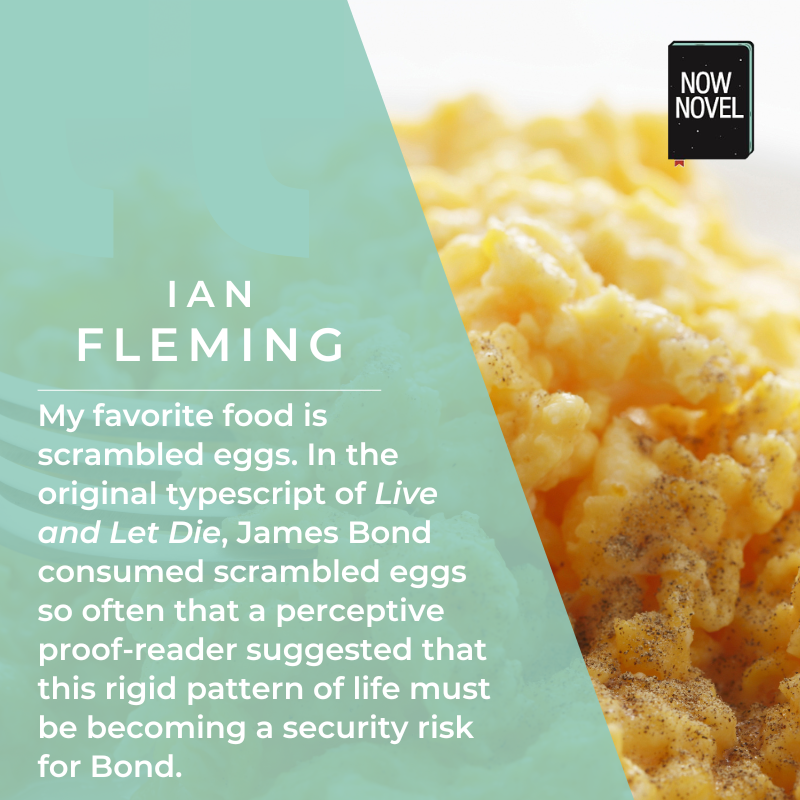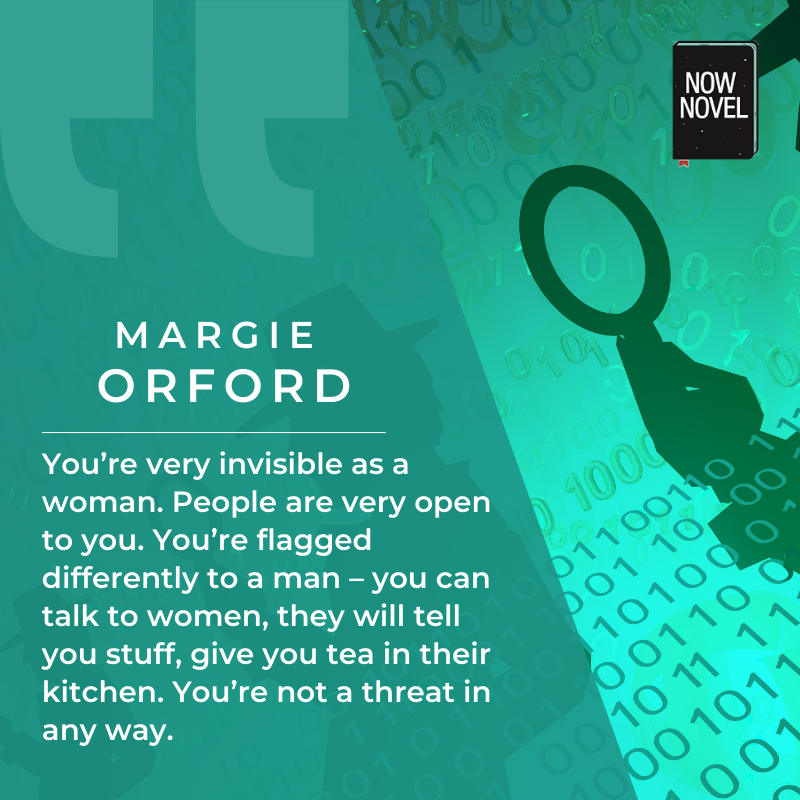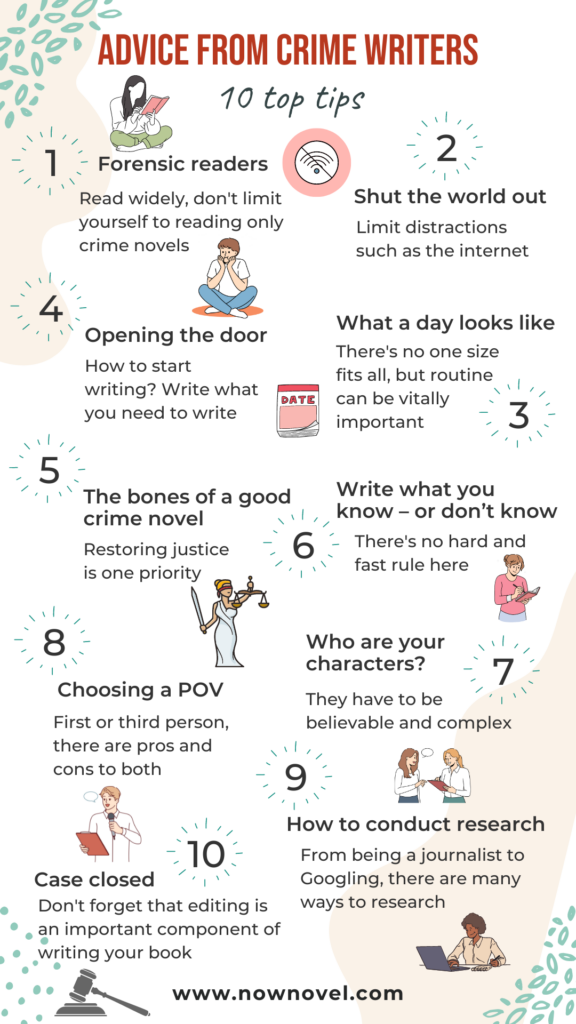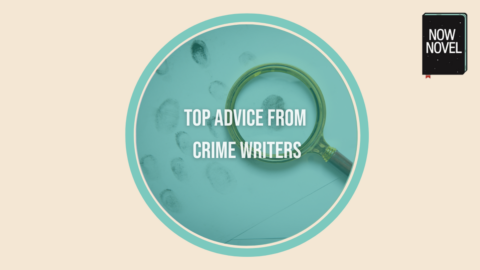From not having your protagonist eat too many scrambled eggs to writing what you know–and don’t know–here’s a roundup of advice from crime writing aficionados.
Of all the advice about how to write thrilling crime novels, who knew that having your detective eat less scrambled eggs might be right up there?
Scrambled eggs? Who eats scrambled eggs in the world of catching killers and spies? Bond, James Bond, that’s who.

In an essay he wrote for the May 1963 issue of Books and Bookmen, and pieced together by Lithub writer, Emily Temple, novelist Ian Fleming writes:
My favorite food is scrambled eggs. In the original typescript of Live and Let Die, James Bond consumed scrambled eggs so often that a perceptive proof-reader suggested that this rigid pattern of life must be becoming a security risk for Bond. If he was being followed, his tail would only have to go into restaurants and say “Was there a man here eating scrambled eggs?” to know whether he was on the right track or not. So I had to go through the book changing the menus.
Wise piece of advice to follow – and one not immediately obvious – keep track of what your character eats. In the DCI Banks set of novels written by Peter Robinson, one of his detectives, Annie Cabbot is described as a vegetarian, but as Robinson admitted on his blog: ‘As has been pointed out to me ad nauseam, Annie has been known to eat coq au vin in one book (though it was changed to ratatouille in some editions) and a potted meat sandwich in another.’
And here’s some more advice on writing crime with riveting drama.
So keep your eye on the er, plate, when writing your crime novel, that’s obvious, but let’s look at some other advice from the experts of the genre.
1. Forensic readers
To write means being a reader, but don’t limit yourself to just reading crime novels, says Donna Leon, ‘Read! And don’t just read crime fiction, read Jane Austin, read Dickens, read Trollope.’ PD James has similar advice: ‘Read widely and with discrimination. Bad writing is contagious.’
Meanwhile Deon Meyer says, ‘The more you do it, the better you become. Nothing improves your writing more than just sitting down and doing it. And read, read, read. Explore the genre you plan to write in. Study and analyze what the really good authors are doing, and how they are doing it. Oh, and to quote thriller author Michael Ridpath: Have fun.’
Louise Penny’s advice is to read books on writing and getting published: ‘I read Writing Mysteries, edited by Sue Grafton and published by Writers Digest. I also read Bestseller by Celia Brayfield and a bunch of other books including The Idiot’s Guide to Getting Published.’
For further inspiration, here’s a list of some must-read crime novels.

GET YOUR FREE GUIDE TO SCENE STRUCTURE
Read a guide to writing scenes with purpose that move your story forward.
Learn more2. Shut the world out
Horror and crime maestro Stephen King believes that a writer should turn off the television and read as much as possible. In fact, reading and writing as much as possible is crucial, and in addition to the television, the writer should eliminate distractions from the writing space including phones.
Scottish thriller writer, Val McDermid takes the train: ‘I like to write on trains. The Wi-Fi is usually dismal, the phone signal intermittent at best and people generally respect the earphones and the open laptop. I’m often surprised by how much I’ve managed to get done on a train journey.’
3. What a day looks like
Daily routines of writers differ. Some will wake in the early hours of the morning, if they have day jobs to get the work done. Others will snatch whatever time they can. For John Grisham, who wrote his first books while having a day job, routine was as important as it is now that he is a bestselling novelist. In a 2016 interview with Brian Koppelman he said:
Routine is what it’s all about. You’ve got to get into a routine that is second nature. Something you love. I wrote the first two books real early in the morning because I didn’t have any extra time. Now it’s about 7:30. Same small office behind the house where I’ve been writing for the last 22 years. Same desk, same computer, same cup of coffee. It’s dark. I love it. There’s no phones, faxes, or internet—I work offline. So I’m in a cocoon for the first three hours, and I just love that. I’ll write for a couple of hours, take a break, then get back into the novel. On a good day I’ll write 2,000 words. A slow day is 1,000. But you do that five days a week for six months and that’s a lot of pages, and that’s how the books are written.
4. Opening the door
One heart-felt way of beginning your story, is, says Walter Mosley, ‘Write from your heart, not for your pocketbook. Write because you mean it, you believe it, because you can’t do anything else. Write as an explorer looking for something that has always been there but no one has ever seen.’
PD James, creator of the Adam Dalgleish mysteries such as Death in Holy Orders, puts it bluntly and simply: ‘Write what you need to write, not what is currently popular or what you think will sell.’
Patience is clearly a virtue, too, when starting, as Nekesa Afia says: ‘The best advice I’ve ever gotten is to be patient. Patience is one of the most valuable traits in publishing. Focus on your own work and be patient.’

5. The bones of a good crime novel
What constitutes a good crime novel is explained by Mosley: ‘A good mystery has to be a good novel, and any good novel takes us on a journey where we discover, on many levels, truths about ourselves and our world in ways that are, at the same time, unexpected and familiar. If the mystery writer gives us a good mystery without a good novel to back it up, then she, or he, has failed.”
Authors Lee and Andrew Child chime in: ‘Somehow we have to make our readers feel genuinely concerned, worried, anxious and scared by the predicament, while simultaneously offering them a subliminal reassurance that everything will turn out right in the end, with justice done and order restored.
Know your genre conventions, says Tana French: ‘For me, the great crime novels are the ones that take the genre conventions and do something new with them – use them as a jumping-off point rather than a set of solid rules.’
6. Write what you know – or don’t know
‘Write what you know,’ says Gillian Flynn, author of Gone, Girl, among others. ‘If you write too close to what you know, you’re basically journaling and that can really get in the way of the fiction part of your story – at least for me. You can get hung up on over-explaining things. Or tying yourself to the truth when it’s supposed to be fiction. If I feel like I’m getting too close to who I am, I pull myself away. If I start basing any character too much on someone I know, I immediately pull away because that means the character isn’t working.’
This is a piece of advice echoed by PD James, ‘You absolutely should write about what you know. There are all sorts of small things that you should store up and use, nothing is lost to a writer. All experience, whether it is painful or whether it is happy is somehow stored up and sooner or later it’s used.’
On the other end of the spectrum are writers such as Michael Robotham says ‘don’t write what you know, write what interests you’.
Walter Mosley, ‘Write from your heart, not for your pocketbook. Write because you mean it, you believe it, because you can’t do anything else. Write as an explorer looking for something that has always been there but no one has ever seen.’
Tweet This
Ruth Ware is with Robotham on this one. As she writes:
But there comes a point where ‘write what you know’ can start to feel like a strait-jacket. With my first crime thriller, In a Dark, Dark Wood, I chose to make my main character Nora a writer, and have her attend a hen party – both experiences I knew something about, though the setting (a boxy glass house in the middle of a Northumberland forest) was entirely made up.
In my second novel, The Woman in Cabin 10, I decided to spread my wings. I wanted to write a crime thriller set on a cruise – and I’d never been on one. In fact the closest thing I’d experienced was a cross-channel ferry (much less glamorous). At the time I had small children, a job, and very limited childcare, and I couldn’t simply drop everything to take a trip to the Norwegian Fjords. So I turned to Google and YouTube, and told myself that I’d start writing and then squeeze in a research trip further down the line.
It’s something Afia agrees with, ‘Write what you know is the worst writing advice I’ve ever gotten, to an extent. I would never have written a novel about a 1920s murder mystery if I had stuck to what I know.’
7. Create believable characters
Although a crime novel is about action and mystery, characterisation is vital, of course. You need to have believable characters, too.
On her website writer Hemmie Martin describes her process:
Before I begin plotting the path of my novel, I write the characters’ names on index cards and start describing their physical appearance. As the plot develops within my mind, I then add personality traits, quirks, habits and words often used by the character onto the cards. I do bear in mind that in the thriller genre, characters are often described more by their actions, which in turn illustrates the concept of the novel.
Writer LR Jones reminds us that creating multi-dimensional characters will add to your writing:
Creating a thriller that hooks readers and keeps them guessing means creating more than an interesting plot. Multidimensional characters should become the building blocks to a sensational mystery. This means constructing characters readers find interesting and either admire, dislike, sympathize with, or relate to in a passionate way. Too often writers put all their energy into developing the lead character, the plot, and the mystery, while ignoring the role the cast of characters play in the evolution of their story.

8. Choose a point of view
JR Jones also has an interesting point to make about point of view. (POV). You could consider writing your crime novel from various points of view or changing POV. She says, ‘In a mystery the story could be multiple points of view or only one—that of your narrator. Writers who are writing a narrator’s POV and no other can be especially hyper-focused on that character’s story.’
Meanwhile, Ulla Hakanson has some good advice on POV on her website:
First-person POV is great for thrillers because it creates a sense of intimacy between the reader and the protagonist. The reader can see what the protagonist is doing moment by moment and know exactly why they do these things. Bringing the reader in close like this gives the story and storyteller credibility, which helps create suspense.
First-person POV is also great for getting inside your protagonist’s head. The readers can get a feel for their personality and what makes them tick, which helps them understand their choices in their novel.
The pronoun ‘I’ in the first-person point of view expresses an opinion. It builds a sense of familiarity between reader and narrator, allowing the writer to subtly guide the reader by telling a story with a bias.
This perspective will enable authors to immerse readers into their stories by helping them identify with the main character from beginning to end. It also creates a sense that the reader is experiencing events as they happen. The first person allows for deeper exploration into motivations and emotions, not just actions.
However, there are limitations to using first-person POV, says Hakanson:
First-person point of view is highly versatile and can be used in any genre, but it may not always be the best choice for a thriller novel. First, it limits how much we know about other characters, which means your protagonist must have strong character development that the protagonist observes somehow.
This perspective will enable authors to immerse readers into their stories by helping them identify with the main character from beginning to end. It also creates a sense that the reader is experiencing events as they happen. The first person allows for deeper exploration into motivations and emotions, not just actions.
9. How to conduct research
After attending a masterclass with crime writer, Mark Billingham, writer Victoria Goldman came away with some tips. One of these is, don’t get bogged down by research. She writes: ‘Do your research after you’ve written your story. Then you’ll know what you need to know. Crime readers can be savvy about procedure, such as DNA and fingerprints, so don’t take liberties. Visit locations if you can, simply to get a feel of a place – what they smell like, what they look like. You can’t get all of that on Google Maps. Illnesses and addictions affect a lot of people so it’s good to have a proper insight, and people are usually happy to talk. If you’re talking to coppers, listen to their anecdotes and banter.’
Similarly, South African Margie Orford used her background as a journalist when writing her Clare Hart crime novels:
I’ve worked with cops. I was a journalist for a long time so you figure out how to get access. And I used to make documentary films so I’m used to that process of getting to know people and to interview them. I work with NGOs and organisations like that, through schools. … And you’re very invisible as a woman. People are very open to you. You’re flagged differently to a man – you can talk to women, they will tell you stuff, give you tea in their kitchen. You’re not a threat in any way.
And then I do that classic filmmaking thing – I find a fixer who will take you and take you and take you. And it’s not difficult. I think South Africans are frozen very often with fears of fear. And visitors too – they’re told ‘don’t go here, don’t go there’. My mother has a fit. She always says I was born without a fear gene. But you find people who will escort you through and you listen to them, you follow their advice.
Gillian Flynn, writer of Gone, Girl, among others, also credits journalism: ‘I could not have written a novel if I hadn’t been a journalist first, because it taught me that there’s no muse that’s going to come down and bestow upon you the mood to write. You just have to do it.’
10. Case closed
Once you’ve typed ‘The end’ on your manuscript, there’s more work to come, in the form of revision and editing. Oyinkan Braithwaite says,’ I try not to send work out that would cause the reader to question if I completed primary school. Many writers don’t like to edit their work … this is not a good thing. Tidy up your work; a writer who doesn’t understand basic grammar cannot inspire confidence.’
For more crime writing advice, have a read of these tips from Raymond Chandler.

Stay in the Loop
with our weekly blog newsletter
Don’t miss out on the chance to learn something new, and be part of a community that shares your interests.


